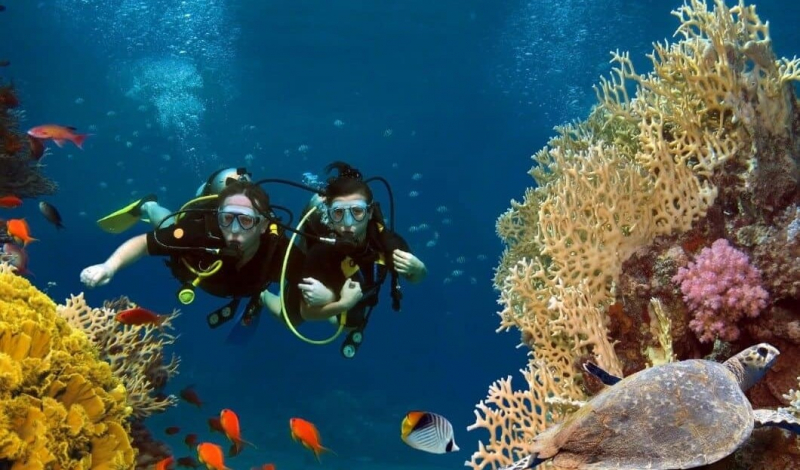Contents
Picture this: dolphins darting past, ancient sea turtles cruising like living artifacts, manta rays spreading out like underwater kites, and moray eels poking out of coral nooks. Dugongs munch on seagrass, seals flip in kelp, and schools of tropical fish light up the reefs in electric colors. These encounters aren’t just luck; they’re the lure of the world’s top diving spots. From Egypt’s shark-filled walls to Mexico’s Mayan caves, let’s jump into five diving spots that are set to redefine “fantastic” in 2025. Brought to you by Tourism Review.
Lady Musgrave, Australia: Reef Rendezvous with a Side of Sunrise Dives
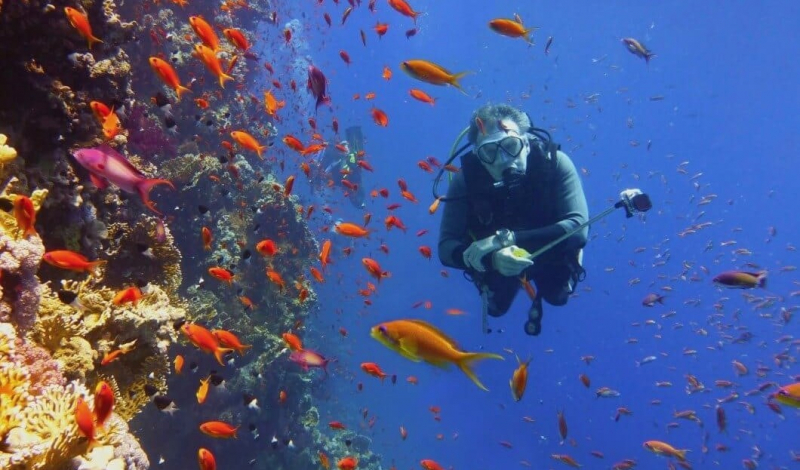
Spanning 2,300 kilometers, Australia’s Great Barrier Reef, a UNESCO treasure, tells a cautionary tale of climate change – with bleaching affecting its northern areas. But head south to Lady Musgrave Island, and you’ll see nature bouncing back. About two hours by boat from Queensland, this island gem has a sheltered lagoon where the reef thrives.
A floating platform serves as basecamp, an eco-center for school trips during the day, and a diver’s paradise at night. Beginners can try guided dives in the calm lagoon, while experienced divers can explore the outer edges, full of mantas, reef sharks, and dolphin groups. And sea turtles? They’re everywhere, hanging around the platform; you can see them from the glass bottom at sunset. Staying overnight means you can dive in again at dawn, when the water shines like gold.
From June to November, things get even more exciting: Minke and humpback whales swim by, their songs felt through your regulator. Lady Musgrave isn’t just a dive site; it’s a chance to see the reef fighting back – sustainable, beautiful, and very much alive.
Marsa Alam, Egypt: Hammerhead Heaven in the Red Sea
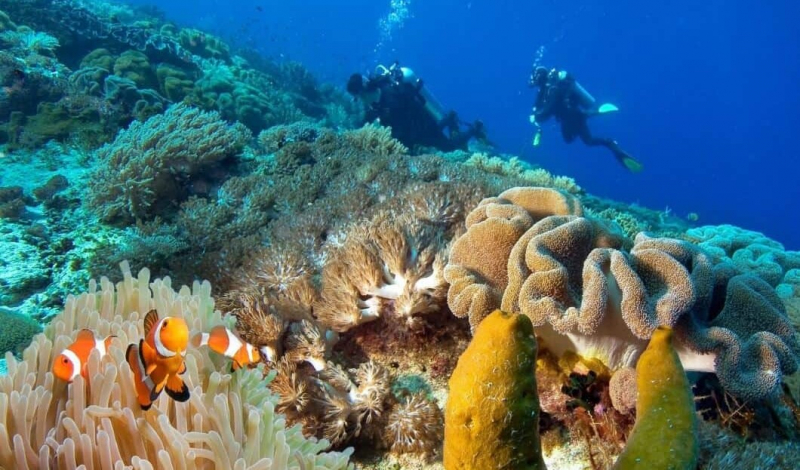
Egypt’s Red Sea, a true diver’s paradise, dazzles with its coral towers and ghostly shipwrecks, drawing adventurers for years. Yet, while Sharm el-Sheikh and Hurghada can get crowded, Marsa Alam, about 300 kilometers south, offers a more peaceful escape. The land isn’t as busy, but underwater? It’s teeming with life: reefs so clear it’s like looking through glass, revealing everything from tiny nudibranchs to top-of-the-food-chain predators.
Elphinstone Reef? A highlight, for sure. Its steep walls drop into the deep, a magnet for hammerheads swimming in cool formations. Grey reef sharks patrol, and oceanic whitetips sometimes make an appearance. Head to remote spots like Daedalus or the Brothers Islands for even more action – barracuda frenzies and eagle ray shows. Quieter bays offer calmer experiences: Dolphins play in the sunlight, turtles graze on algae, and dugongs waddle about like underwater hippos. Even beginners can get in on the fun, dipping into shallow waters for a taste of the magic. In Marsa Alam, the Red Sea shares its secrets without the overwhelming chaos of overtourism.
Click here to preview your posts with PRO themes ››
Yucatán, Mexico: Cenote Secrets of the Maya Underworld
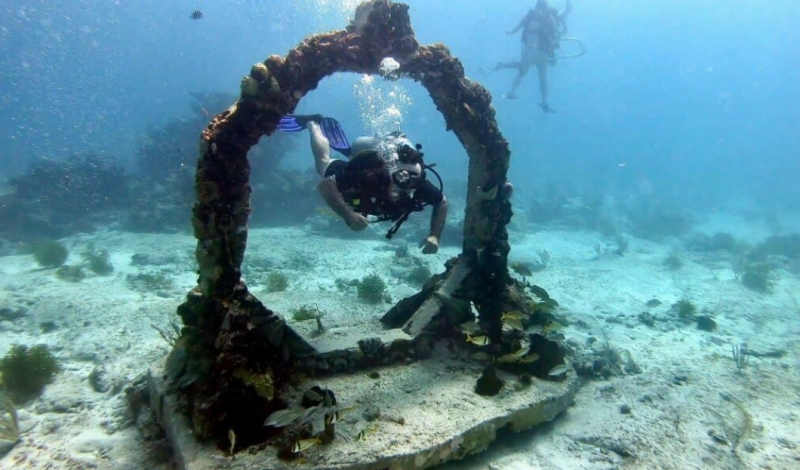
If you prefer the enclosed feel over the open ocean, cave diving is calling you – and the Yucatán Peninsula is its capital. Beneath the lush jungles, a secret world of water lies waiting: Cenotes, or sacred sinkholes cut into the limestone, gateways to an underground river system. More than just pools, they’re really entry points to a subterranean story, where freshwater rivers wind for hundreds of kilometers.
Imagine stalactites hanging like crystal chandeliers, beams of light piercing the darkness, and tunnels shifting between narrow passages and vast chambers. The geology is incredible – walls with embedded fossils, layers of fresh and saltwater mixing – but the cultural history truly resonates. The Maya viewed cenotes as entrances to Xibalba, places for offerings and seeking guidance. Nowadays, certified cave divers use lights and lines, rediscovering that ancient connection in the quiet dark.
Palau: Shark Sanctuary of Currents and Caves
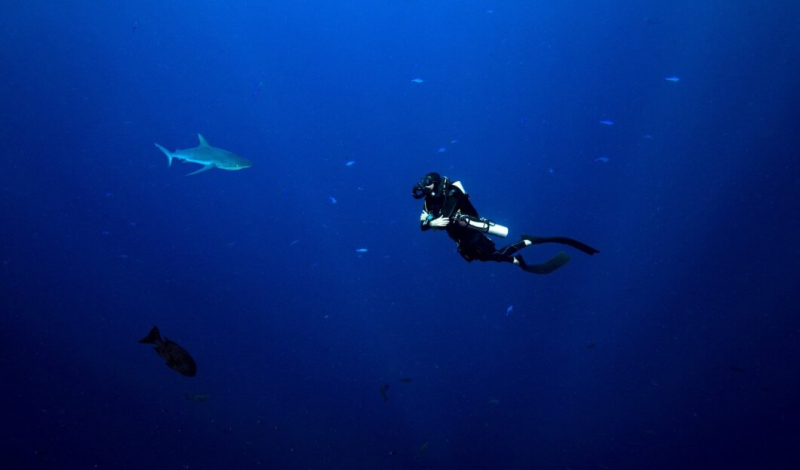
Tucked away in the western Pacific, Palau is still a bit of a secret among the diving spots – its remoteness, oddly enough, is its strength. As the world’s largest shark sanctuary, Palau’s underwater realms thrum with life. Whitetip, blacktip, and grey reef sharks cruise effortlessly, flanked by eagle rays and the massive Napoleon wrasse. Barracuda schools shimmer like liquid mercury, while intricate rock formations invite exploration.
Blue Corner and German Channel? Adrenaline rushes here. Dozens of mantas often gather amidst strong currents – a dive for experts who enjoy holding a negative entry against the flow. Sheer walls drop into the abyss, caves meander into dark recesses, and the Rock Islands’ sharp peaks conceal WWII relics: Sunken ships and planes, now rusting artificial reefs. Want something truly unique? Jellyfish Lake provides an almost unbelievable experience – float among countless stingless golden jellyfish; courage is the only requirement.
Richelieu Rock, Thailand: Andaman’s Jewel of Giants and Ghosts
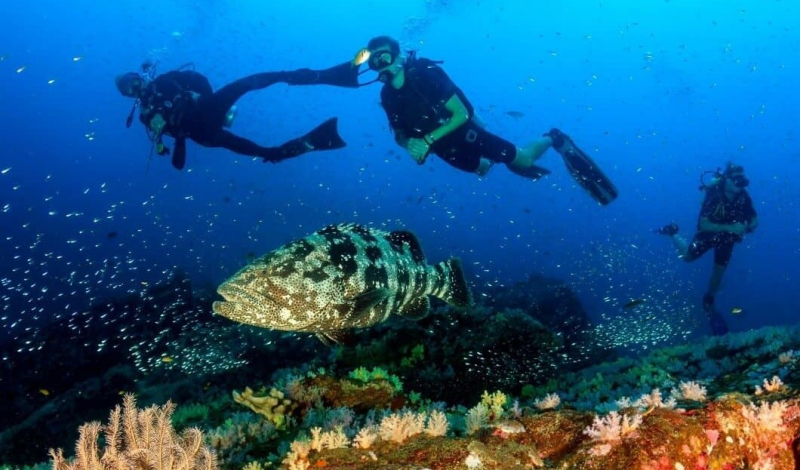
Around eighteen kilometers east of the Surin Islands, Richelieu Rock suddenly appears – a solitary limestone peak in the Andaman Sea, visible only when the tide’s low. Called the “Jewel,” it’s like a diver’s mecca: A steep wall covered in purple soft corals, sea fans, and anemones, dropping far beyond 30 meters.
With visibility sometimes reaching 35 meters, you’ll witness a stunning symphony of marine life: Barracuda formations, schools of mackerel, and large snapper groups. The small stuff is spectacular too at this diving spot– ghost pipefish blending into sea fans, harlequin shrimp pairing up on urchins, and seahorses swaying like sentinels. If you’re there from March to April, whale sharks visit, a truly inspiring sight.

